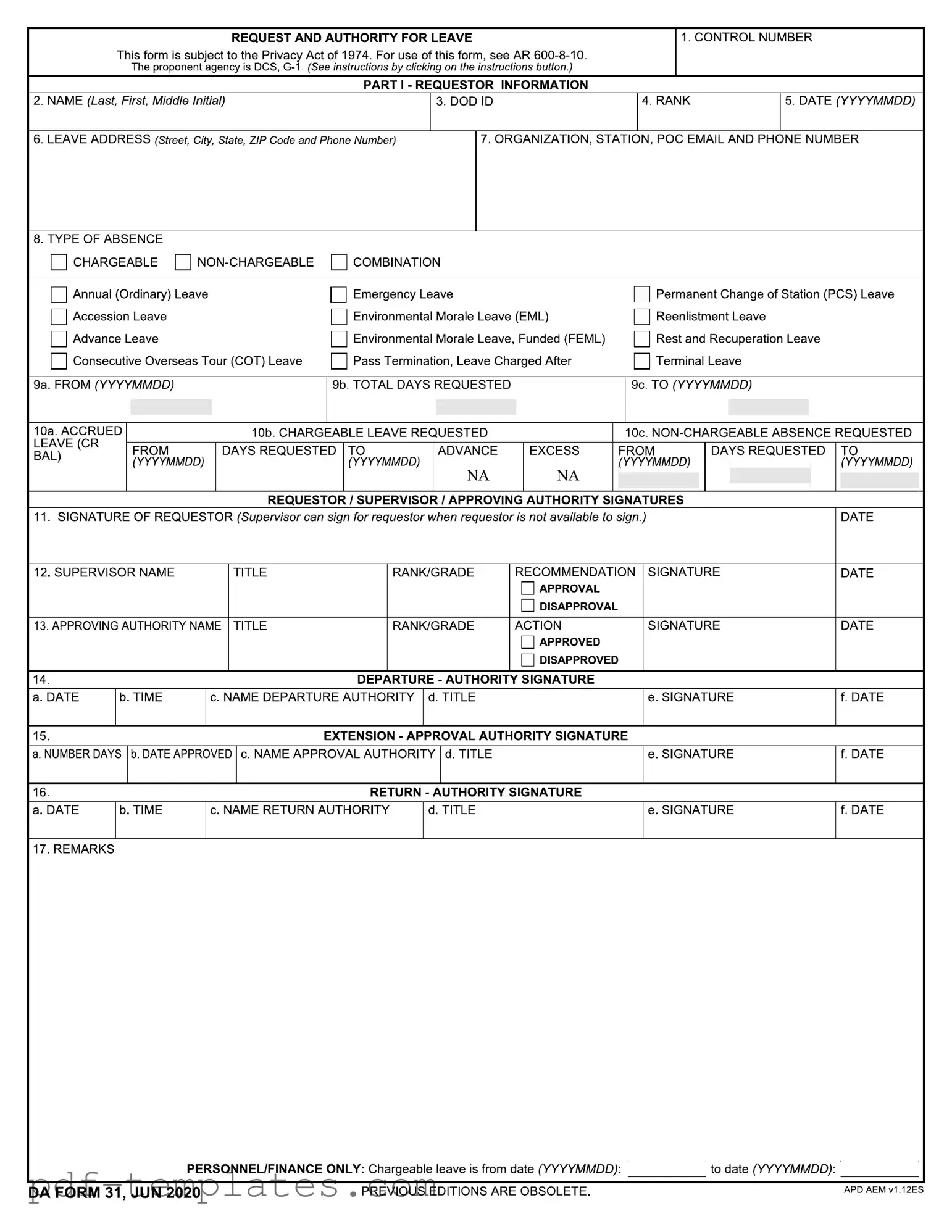The DA Form 31, which serves as a request and authority for leave, shares similarities with the Standard Form 50 (SF-50). The SF-50 is used primarily for documenting personnel actions in federal employment, such as promotions, changes in job title, or leave without pay. Both forms require detailed information about the employee, including their name, identification number, and the type of action being requested. While the DA Form 31 focuses specifically on leave requests for military personnel, the SF-50 is broader and encompasses various employment actions, making both essential for maintaining accurate personnel records.
Another document that resembles the DA Form 31 is the Request for Leave or Approved Absence (Form 5-3). This form is utilized by certain government agencies to request leave, similar to the military's approach. The key similarity lies in the requirement for the requester to provide personal details, the type of leave, and the duration of the absence. Both forms emphasize the need for supervisor approval, ensuring that the leave is properly documented and authorized before it can be taken.
The Employee Leave Request Form is also akin to the DA Form 31. This form is often used in various workplaces to formally request time off. Like the DA Form 31, it requires the employee to specify the dates of leave, the type of leave being requested, and any necessary signatures for approval. The structure of both forms ensures that the leave process is systematic, allowing for clear communication between the employee and management regarding time off.
Additionally, the Leave of Absence Request Form is comparable to the DA Form 31. This form is commonly used in both private and public sectors to request extended time away from work. Similarities include the need for detailed personal information and the requirement for managerial approval. Both forms serve to protect the rights of the employee while ensuring that the employer is informed and can manage workflow effectively during the absence.
The Family and Medical Leave Act (FMLA) Certification Form also shares characteristics with the DA Form 31. This form is used to request leave under the FMLA, which allows employees to take time off for family or medical reasons. Both forms require a clear statement of the reason for the leave, the expected duration, and often necessitate the approval of a supervisor or human resources. The primary focus of both forms is to ensure compliance with legal requirements while facilitating the employee’s need for time away from work.
The Sick Leave Request Form is another document similar to the DA Form 31. This form is specifically designed for employees who need to take time off due to illness. Like the DA Form 31, it requires the employee to provide their name, the dates of absence, and a signature for approval. Both forms ensure that the employer is aware of the employee’s absence and can plan accordingly to maintain productivity.
Moreover, the Vacation Request Form bears resemblance to the DA Form 31. This form is used by employees to formally request time off for vacation purposes. Both forms require the employee to indicate the specific dates of leave and provide a reason for the absence. The structured format of both documents helps facilitate the approval process and ensures that all necessary information is captured for record-keeping.
Lastly, the Leave Donation Request Form is similar to the DA Form 31 in that it allows employees to request leave from a pool of donated leave days. Both forms require specific details about the leave being requested, including the duration and type of leave. The emphasis on supervisor approval and proper documentation is a commonality that helps maintain accountability and transparency in the leave process.
